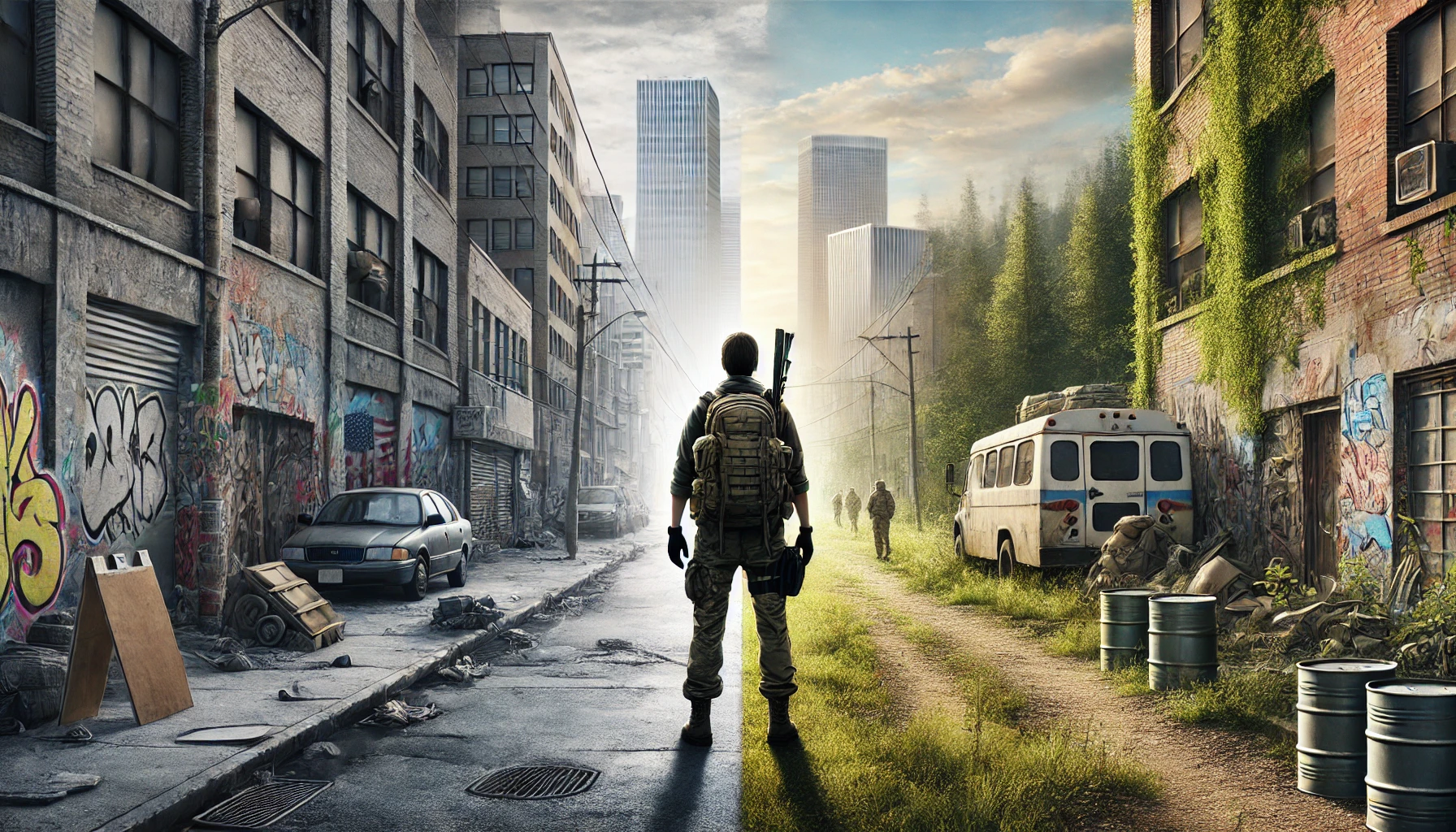Emergencies can strike at any time, and being prepared is the key to surviving and thriving in unexpected situations. Whether you’re navigating the concrete jungle of an urban city or the sprawling landscapes of a rural area, having a well-thought-out emergency kit is essential. But here’s the kicker: the needs of urban dwellers are vastly different from those of rural residents.
In this blog, we’ll dive into the must-have items for emergency kits tailored to urban and rural settings, highlight key differences, and provide tips to ensure you’re ready for anything. Let’s get started!
Why Tailor Your Emergency Kit to Your Environment?
Urban and rural environments come with unique challenges and risks. For example:
- Urban areas: Densely populated, prone to infrastructure failures, traffic jams, and higher crime rates during emergencies.
- Rural areas: Sparse population, limited access to resources, and longer wait times for emergency services.
Your emergency kit needs to reflect these realities to give you the best chance of staying safe and comfortable during a crisis.
Core Essentials for Any Emergency Kit
Before we dive into the urban vs. rural breakdown, let’s cover the basics. Regardless of where you live, every emergency kit should include these essentials:
- Water: At least one gallon per person per day for drinking and sanitation, with a three-day minimum supply.
- Food: Non-perishable items such as canned goods, granola bars, and freeze-dried meals.
- First Aid Kit: Bandages, antiseptics, pain relievers, and any necessary prescription medications.
- Flashlight and Batteries: Power outages are common during emergencies.
- Multi-Tool: A versatile tool for repairs, opening cans, and cutting materials.
- Portable Charger: For keeping your devices powered.
- Important Documents: Copies of IDs, insurance papers, and emergency contacts.
- Cash: Small bills are best, as ATMs may be out of service.
- Clothing and Blankets: Weather-appropriate attire to stay warm and dry.
- Emergency Radio: Preferably one with hand-crank and solar charging capabilities.
These essentials lay the foundation of any kit, but the environment you live in will determine what additional items to pack.
Urban Emergency Kits: What You Need to Survive the City Chaos
City life comes with its own set of hazards, from public transit shutdowns to building evacuations. Urban emergency kits should emphasize mobility, safety, and communication.
Key Items for Urban Emergency Kits
- Compact Design: Choose a backpack or duffle bag that’s easy to carry, especially if you need to evacuate on foot.
- Dust Masks and Goggles: Air quality can deteriorate quickly in urban emergencies like fires, industrial accidents, or building collapses.
- Map of the City: Digital maps might not work during power outages. A physical map helps you navigate unfamiliar routes.
- Whistle: Use it to signal for help in crowded or noisy environments.
- Pepper Spray or Personal Alarm: Security can become a concern during urban crises.
- Foldable Water Containers: Space-efficient and useful for storing extra water when available.
- Comfortable Shoes: Many urbanites commute in dress shoes or heels. A pair of sneakers in your kit can be a lifesaver.
- Public Transit Alternatives: Include a folding bike, scooter, or even a pair of rollerblades if you rely on public transportation.
- Extra Phone Battery: Urban areas are heavily reliant on communication; staying connected is crucial.
- Power Bank with Solar Charging: Useful when power outages last for days.
Urban-Specific Tips
- Stay Informed: Follow local emergency alerts on your phone or radio.
- Know Your Exits: Familiarize yourself with building evacuation routes and alternate paths to safety.
- Pack Light: Portability is key in urban settings where you may need to move quickly.
Rural Emergency Kits: Ready for the Long Haul
In rural areas, emergencies often involve isolation and limited access to emergency services. Your kit needs to focus on self-sufficiency and long-term survival.
Key Items for Rural Emergency Kits
- Water Filtration System: Access to clean water might be miles away. Filters and purification tablets are a must.
- Tools for Hunting or Fishing: A foldable fishing rod or compact hunting gear can provide food in a pinch.
- Fire Starting Tools: Pack waterproof matches, lighters, and a firestarter.
- Comprehensive First Aid Kit: Include items like splints, sutures, and wound care supplies since medical help may not be nearby.
- High-Quality Knife: Useful for cutting, carving, and self-defense.
- Heavy-Duty Clothing and Boots: Durable gear for rugged terrain and unpredictable weather.
- Two-Way Radios: Cellular service can be spotty or nonexistent in rural areas.
- Portable Shelter: A compact tent or tarp can protect you from the elements.
- Bear Spray: Depending on your location, wildlife encounters may pose a risk.
- Generator or Hand-Crank Power Source: Ideal for long-term power outages.
Rural-Specific Tips
- Learn Survival Skills: Practice building fires, navigating with a compass, and basic first aid.
- Stockpile Supplies: Consider storing extra food and water since restocking may not be an option during emergencies.
- Stay Connected: Have a plan to communicate with neighbors or loved ones, even if it’s through ham radios.
Adapting Your Emergency Kit for Seasonal Changes
Whether you’re in the city or countryside, your kit should reflect the seasons. In winter, add items like hand warmers, thermal blankets, and ice scrapers. For summer, include sunscreen, bug spray, and extra water.
Testing and Updating Your Emergency Kit
An emergency kit isn’t “set it and forget it.” Regularly check and update it:
- Replace expired items, especially food and medicine.
- Test your equipment, like flashlights and radios, to ensure they work.
- Adjust the contents for any changes in your family or environment.
Final Thoughts: Be Ready, No Matter Where You Are
Building the perfect emergency kit isn’t just about following a checklist—it’s about tailoring it to your specific needs and environment. Urban residents need kits focused on portability and communication, while rural dwellers require self-sufficiency and long-term planning.
Start small if you’re overwhelmed, but don’t wait until disaster strikes to take action. A well-prepared kit could be the difference between chaos and confidence in an emergency.
Have you customized your emergency kit yet? Share your tips and experiences in the comments below! And don’t forget to bookmark this guide for future reference. Stay safe!

